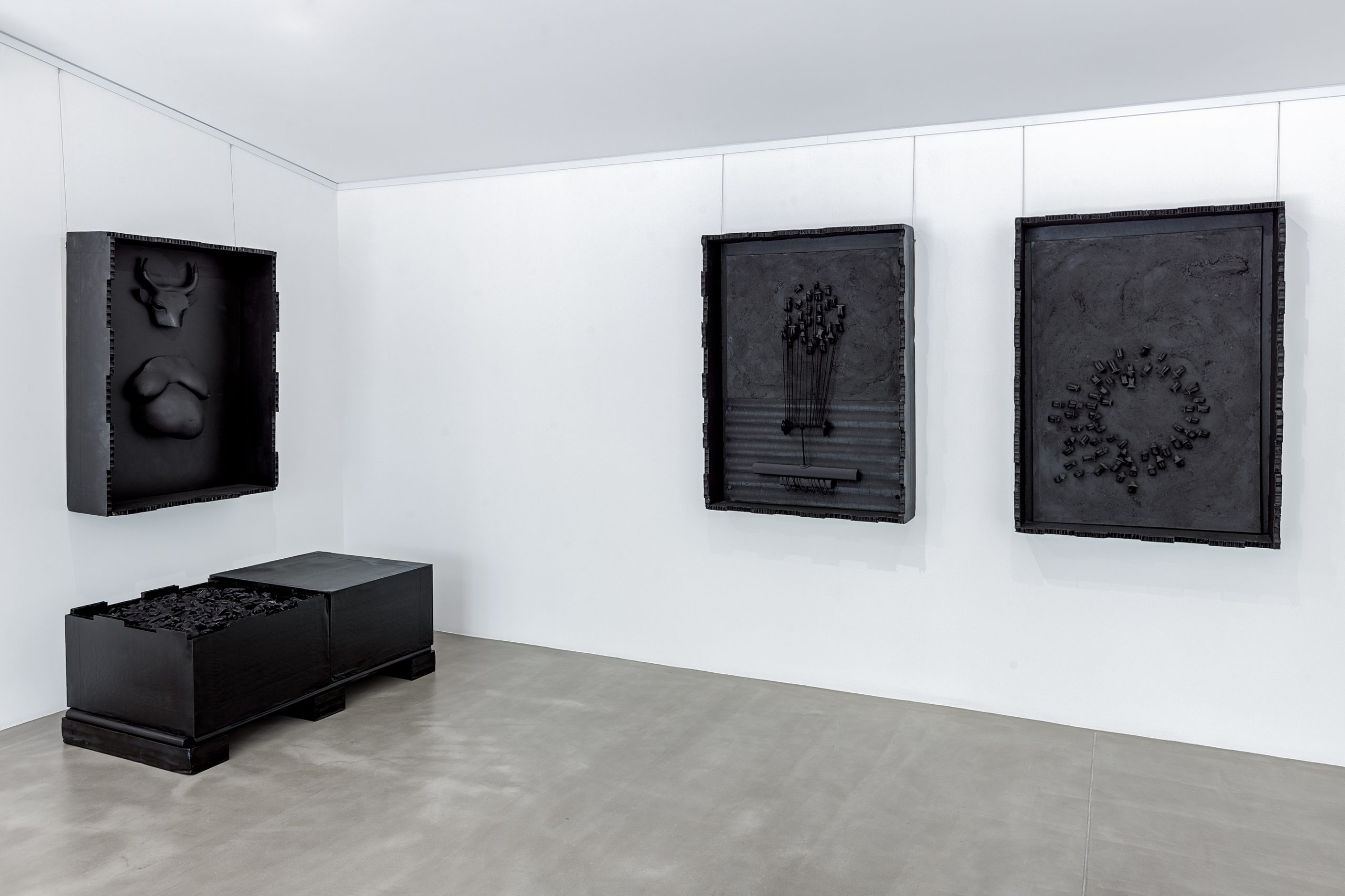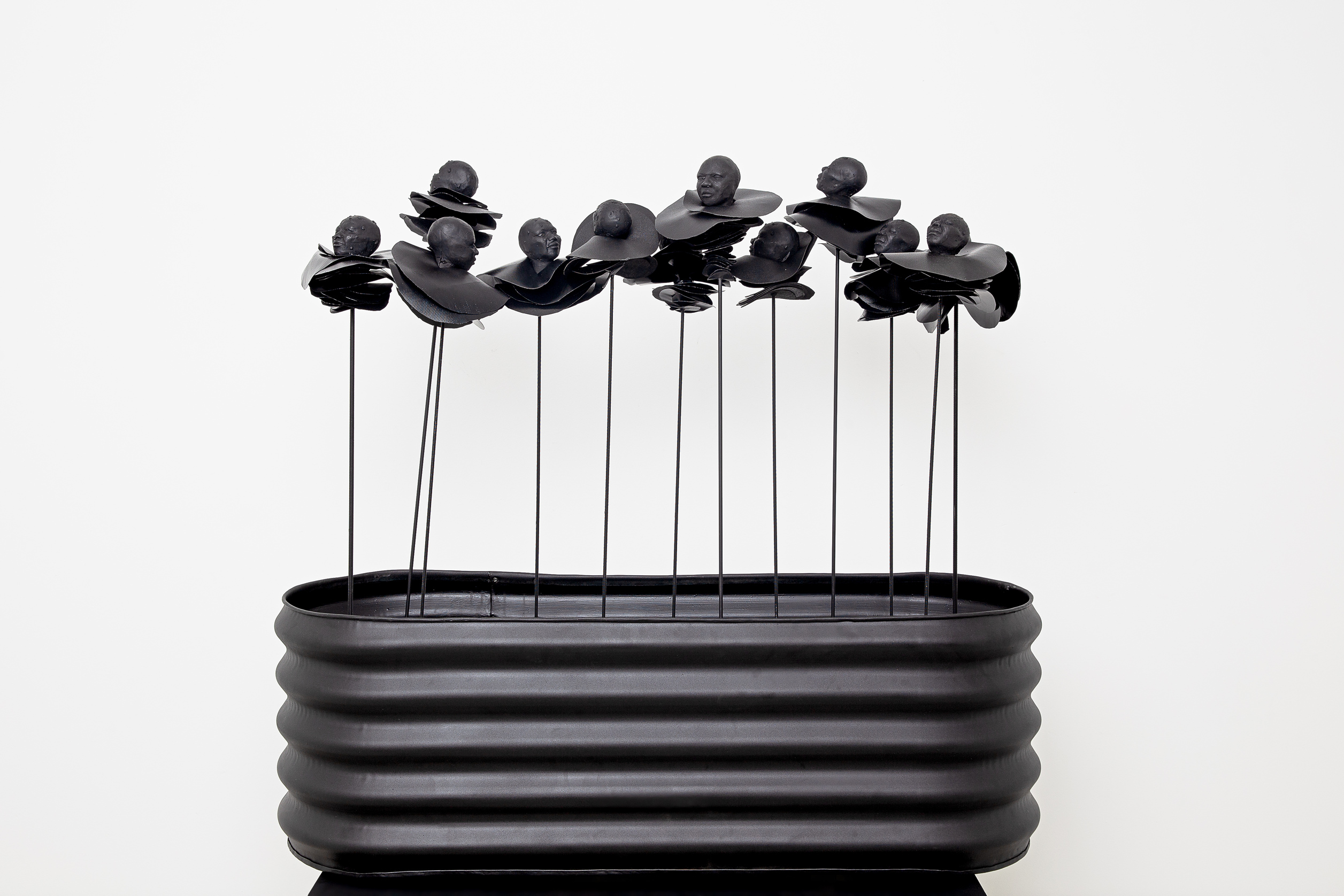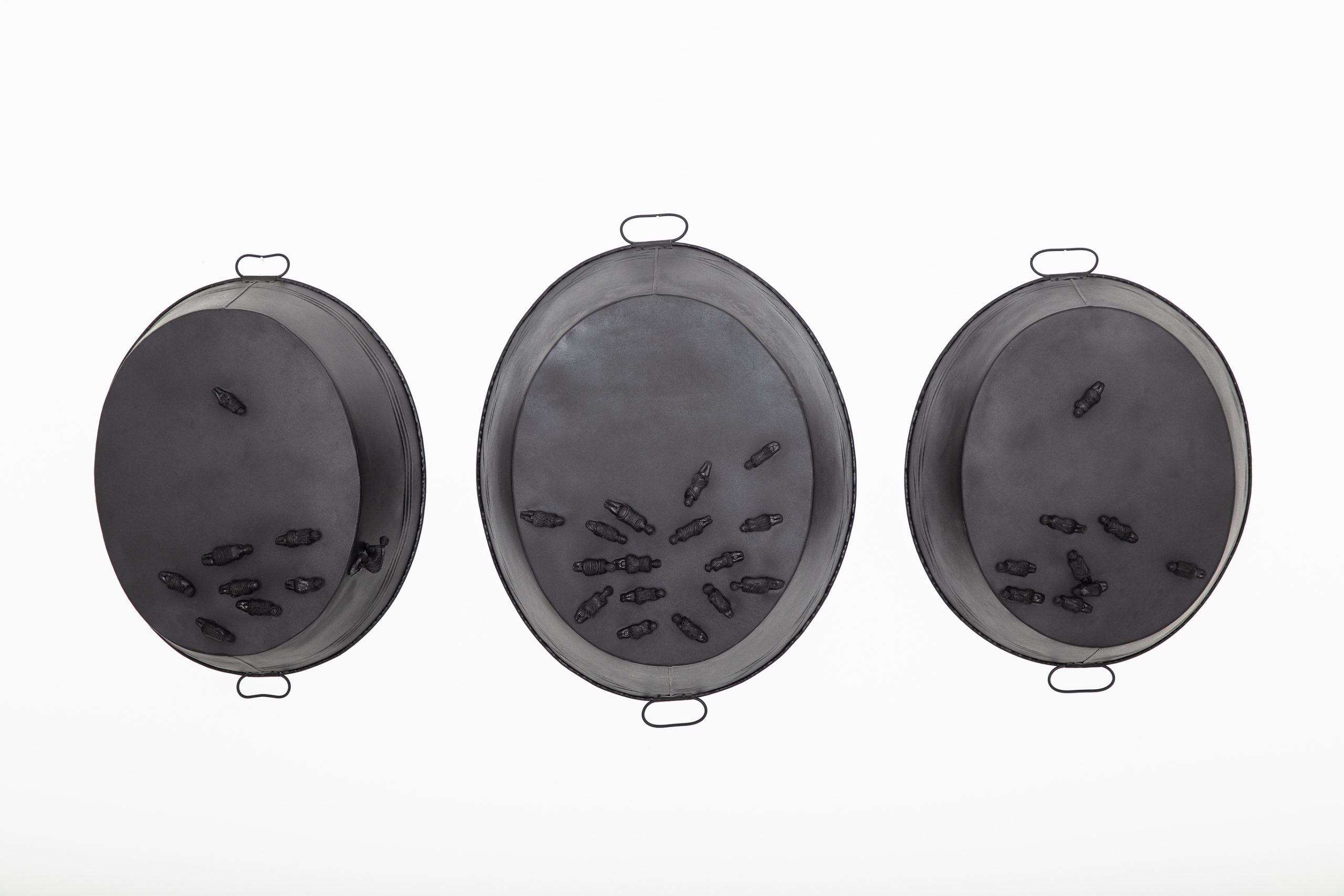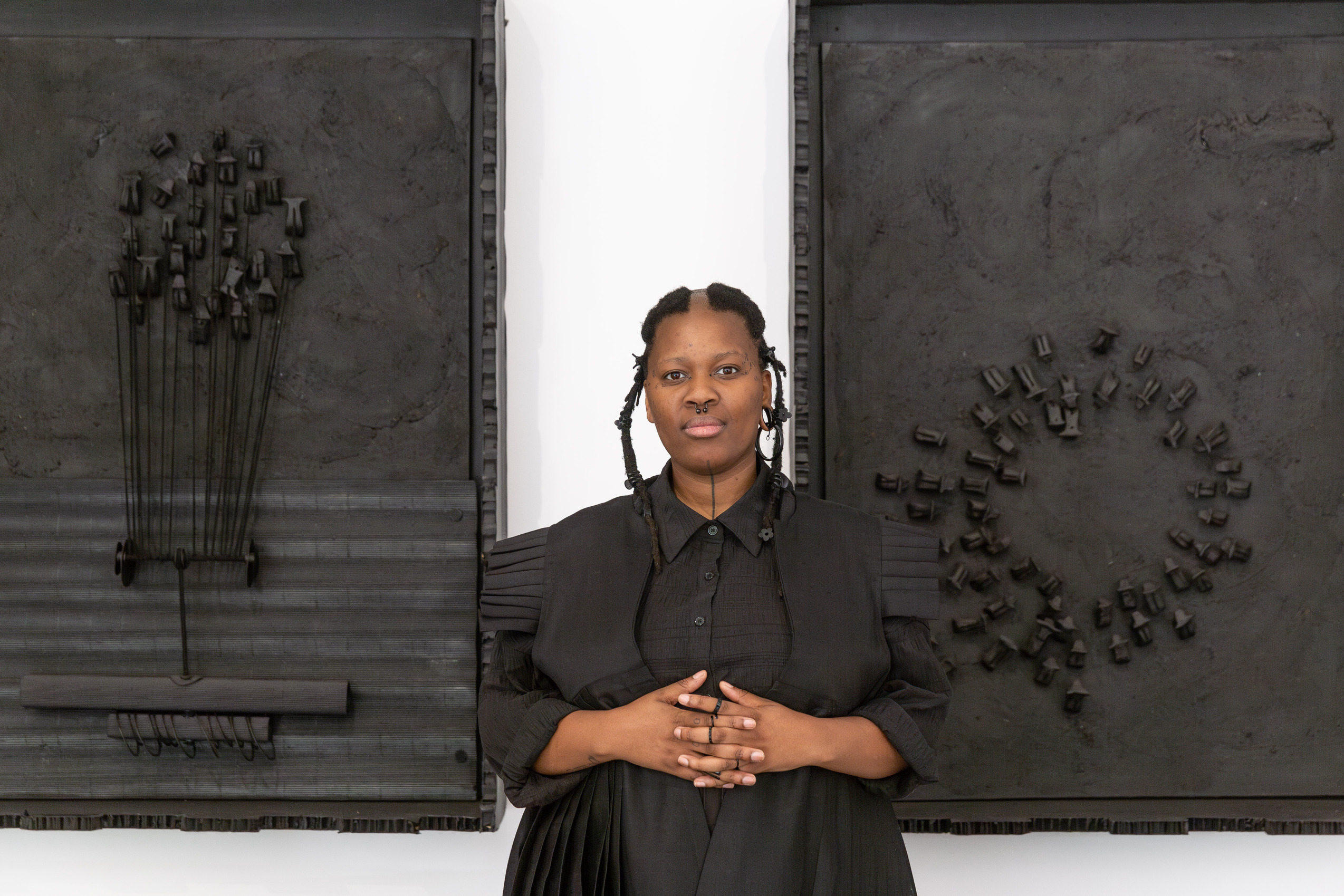The land is black, and a farmer stands tall in the centre, watching over the women, cows and harvest. She finds root in the earth while her cow horns (shaped like a new crescent moon) point to the sky. A mother just initiated a child into the world, the cast at the foot of the land tells it so. Some herds gather while others make their way. The lilies are in bloom, this harvest has flowered in black, rested faces. Some grow in ponds with no water while others grow in upside-down pot plants with no soil. The women are on all fours, praying, grazing, and moving. Cow bells ring in the distance. The land is black; it is not cursed.

In Cow Mash’s solo exhibition RE GONA at the Berman Contemporary, the practice of world-making and remembering are interwoven, moulded through intuitive sculpting and repetitive gestures. In Sepedi, RE GONA is used in response to “le kae?” (how are you?) and translates to “we are here”. Mashilo grapples with ancestral inheritance, the spiritual politics of gender, fantasy, intimacies of land politics and the multidimensionality of being.
In MaLeru the artist places a cast of her heavily pregnant belly on canvas, a cow face and horns complete the self-portrait. She frames this work in a honeycombed cardboard crate, exploring labour within womanhood, farm life and art making. “This work brings labour into play, as in labour of the body, labour as physical work. I’m also thinking about spiritual labour of working with the mind and working through self” Mashilo says.
Her unique approach to the material contemplates a marrying of labour and agency, bringing about reconceptualisations of familiar objects that rouse curiosity before stirring up nostalgia. In using honeycombed cardboard crates as frames for the canvas and plinth for sculptures within the exhibition, she foregrounds possibilities to devise indigenous frameworks for material considerations in art making.

The farm lends itself as a milieu for Mashilo to uncover the self, the familial, collective and spiritual. Mašemong is the central figure within the show; she stands in masculine prowess, clenched-fisted, horned and firmly grounded into the Earth. Her posture gives prominence to the multiplicities of being often threatened by colonial gender binaries. For instance, the normalcy of existing as multiple is evidenced by the lack of gendered pronouns in the Sepedi linguistic design. RE GONA explores ancestral presence, cohabitations of the body and the instructional nature of inherited gifts.
In an interview, Mme Mmakgabo Mmapula Helen Sebidi speaks to this passing down of gifts. She tracks back to her grandmother telling her that she was passing down skills for Sebidi to communicate to the world. “When I do this, I’m building a house on you. The house is not like the ones we do here with our hands, it’s the house that will go into the world with you. It will travel and it will be in you.” Sebidi also shared that the full potency of this message revealed itself after her grandmother’s passing.
When speaking on a panel about decoding links between heritage and spirit at the Reimagining Heritage, Archives and Museums convening, Gogo Khanyakude introduced and then named himself through izithakazelo (clan names). He gave insight into why Africans should think of and consider clan names as museums. When archived and passed down with clear articulation they function as historical sites carrying legacy stories of totems, connections with animal spirits, uNkulunkulu, water, the land and migration.

In Sa mosadi ke Thapelo the act of ukuzilanda (to fetch oneself) is attached to place. The viewer is given an aerial view of a group of women gathered in a circle, engaging in discussion, prayer or both while on all fours. We bear witness to Mashilo looking inward and engaging in curiosities around her lineage. She meditates on the tension of lacking resonance with heteronormative gender prescriptions and inheriting her second name “Mothipha’ (girl) from her great-grandmother. Time consistently affirms that generational repair comes with asking questions. Upon learning that her great-grandmother harvested black melons, she concludes that her intuitive gravitation towards black in her work is a form of magic.
Overall, Mashilo’s choice to reference and reimagine prominent materials used in African contexts speaks to an idea articulated by Theaster Gates as the invitation “to strip the material back to its most basic form then call forth the potency of ritual, utility and philosophy and end up at new bodies of work and new ways of thinking about other forms.” We see the artist take this notion a step further by using synthetic materials and mixing cow dung with acrylic paint. Pointing to how displacement, migration and urbanisation challenge the preservation of ritual technologies within African spiritual and cultural practice.
The works archive among other things, Mashilo’s circular movements around what it means to be named, self name and inherit a name. Through engaging ideas of collectivity and multiplicity, she uncovers her history and makes sense of her lineage and genomic imprints. The throughline seems to be that the artist is making and receiving familial and spiritual connections through time.





















































